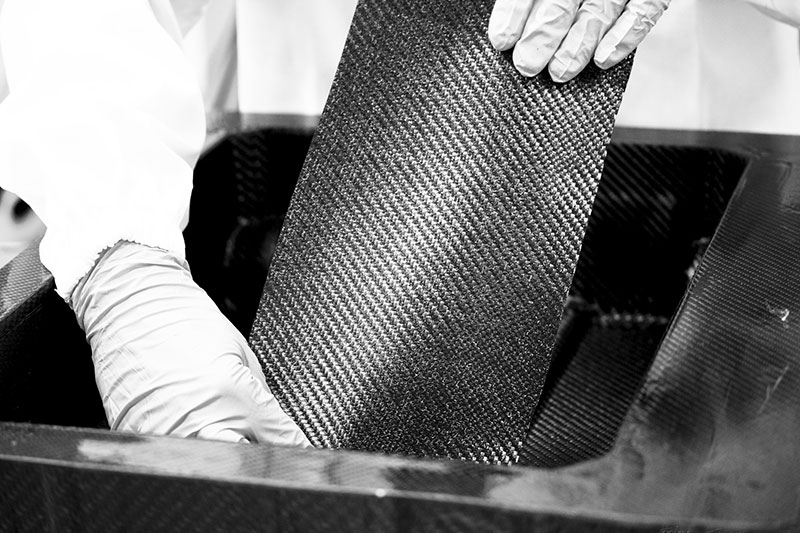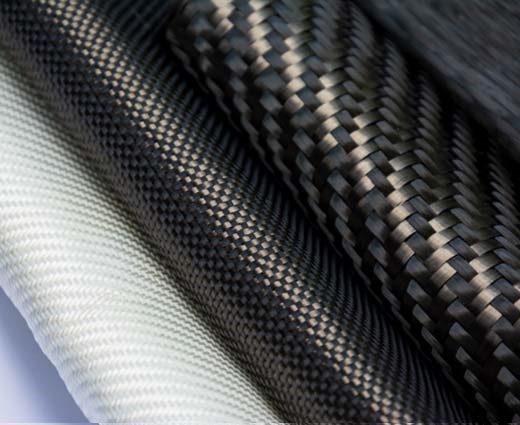
Specialize in Compression molds

Specialize in Compression molds
Carbon fiber, also known as carbon graphite, is a high-strength fiber made by heating synthetic fibers or polyacrylonitrile fibers or petroleum pitch to an appropriate temperature. Today, carbon fiber has become an essential component of many products, with new applications being developed every year. The United States, Japan, and Western Europe are the major producers of carbon fiber.

Carbon fiber is the hardest and strongest reinforcing fiber in polymer composites, second only to glass fiber. Carbon fibers are classified by the fiber's tensile modulus, which measures how much tensile force a fiber of a certain diameter can withstand without breaking. Depending on the fiber's orientation, carbon fiber composites can be stronger in one direction or equally strong in all directions. A small piece can withstand several tons of impact, with minimal deformation. The complex interweaving nature of the fibers makes them difficult to break.
The two main applications of carbon fiber are in specialized technologies, including aerospace and nuclear engineering. Other functional areas include textiles, microelectrodes, carbon fiber-reinforced composites for manufacturing aircraft and spacecraft parts, racing car bodies, golf club shafts, bicycle frames, fishing rods, car springs, sailboat masts, and many other components requiring lightweight and high strength.
Carbon fiber can be classified based on its modulus, strength, and final heat treatment temperature.
The materials used to manufacture carbon fiber are called precursors. Approximately 90% of carbon fibers are made from polyacrylonitrile (PAN). The remaining 10% is made from synthetic fibers or petroleum pitch. All of these materials are organic polymers, characterized by long chains of molecules bonded together by carbon atoms. The exact composition of each precursor varies by company and is often considered a trade secret.
The process of manufacturing carbon fiber is partly chemical and partly mechanical. The precursor (the molecular backbone of the fiber) is stretched into long chains or fibers and then heated to very high temperatures, preventing it from coming into contact with oxygen. Without oxygen, the fibers cannot burn. Instead, the high temperature causes vigorous atomic vibrations within the fiber until most of the non-carbon atoms are driven out. This process is called carbonization, leaving behind fibers consisting of long, tightly interlocked chains of carbon atoms, with only a few non-carbon atoms remaining.
The primary health hazard associated with handling carbon fiber is due to mechanical irritation and abrasion, similar to glass fibers. If not controlled, these microfibers have the potential to embed in human skin or mucous membranes, causing irritation. It's crucial to protect the eyes and throat from carbon fiber dust.

1. High Strength-to-Weight Ratio: Carbon fiber weighs about 25% of steel, 70% of aluminum, and is stronger and harder than both. High-end automotive engineers use composite materials to reduce vehicle weight by up to 60%, while enhancing collision safety.
2. Durability: CFRP composite materials do not rust regardless of the environment. Their fracture toughness is lower than metals but higher than most polymers. High dimensional stability allows them to maintain their shape, whether hot or cold, wet or dry.
3. New Design Options: CFRP composites offer design options that are difficult to achieve with traditional materials. It allows parts consolidation; a single composite part can replace the entire assembly of metal parts. Surface texture can be altered to mimic any finish, from smooth to textured.
The future of the carbon fiber-reinforced plastics (CFRP) market looks promising, with opportunities in aerospace, automotive, pressure vessels, and wind energy industries. The main drivers of this market are the growing demand for high-performance and lightweight composite materials and the increasing performance requirements of various end-use industries. Emerging trends directly impacting the industry include the development of technologies to reduce carbon fiber manufacturing costs and the recycling of parts and CFRP, as recycled carbon fiber reduces product costs and environmental impact.
Contact US
Email: master@zjmdc.com
Tel: +86 576 84616076
Fax: +86 576 84616079
Mobile: +86 13906573507(Mr. Wang)
Address: No.116 mochuang road, Huangyan Xinqian street,Taizhou,Zhejiang,China